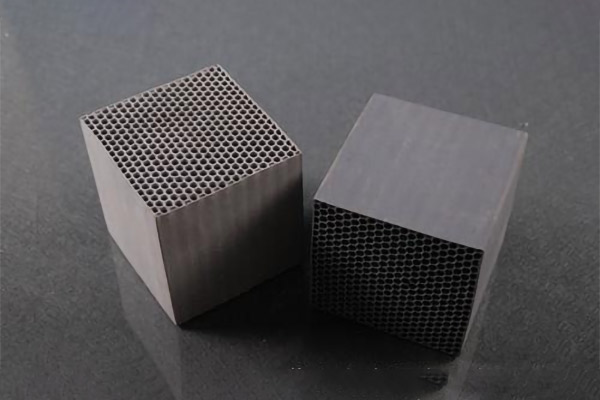Atmospheric pressure sintered silicon carbide is a non-metallic carbide with silicon and carbon covalent bond, and its hardness is second only to diamond and boron carbide. The chemical formula is SiC. Colorless crystals, blue and black in appearance when oxidized or containing impurities. The deformation of silicon carbide with diamond structure is generally called emery. The hardness of emery is close to diamond, good thermal stability, stable to hydroxy acid aqueous solution and concentrated sulfuric acid, and unstable to the mixed acid or phosphoric acid of concentrated hydrogen acid and nitric acid. Alkalis that melt in a hollow atmosphere differentiate. It is divided into synthetic silicon carbide and natural silicon carbide. Natural silicon carbide, known as carbonite, is mainly found in kimberlite and volcanic amphibolite, but its amount is small and has no excavation value.
Industrial atmospheric pressure sintered silicon carbide is a mixture of -SiC and -SiC and comes in two colors: black and green. Pure silicon carbide is colorless, containing impurities are black, green, blue, yellow. Hexagonal and cubic grain boundaries, the crystal is plate, compound column. Glass luster, density 3.17 ~ 3.47G/CM3, Morse hardness 9.2, the microscope also at 30380 ~ 33320MPa melting point: atmospheric 2050 began to differentiate, recovery atmosphere 2600 began to differentiate. The elastic coefficient is 466,480 MPa. The tensile strength is 171.5MPa. The compressive strength is 1029MPa. The linear expansion coefficient is (25 ~ 1000)5.010 ~ 6/. The thermal conductivity (20) is 59w/(m k). Chemical stability, boiling in HCl, H2SO4, HF will not erode.
According to the different uses, atmospheric pressure sintered silicon carbide is divided into abrasive, refractory data, deoxidizer, electrical silicon carbide and so on. The SiC content of abrasive silicon carbide shall not be less than 98%. Refractory silicon carbide is divided into: (1) advanced refractory data black silicon carbide, its SiC content is exactly the same as grinding silicon carbide. (2) Secondary refractory data black silicon carbide, SiC content of more than 90%. (3) The content of black silicon carbide and SiC in low-grade refractories is not less than 83%. The content of silicon carbide and SiC used in deoxidizer is generally required to be above 90%. However, carbon industrial graphitization furnace insulation, silicon carbide content of more than 45% of the treatment can also be used as steelmaking deoxidizer. Silicon carbide for deoxidizing agent has two kinds of powder shape and molding block. Powder deoxidizer black silicon carbide generally has a particle size of 4 ~ 0.5 mm and 0.5 ~ 0.1 mm.
Electric utility silicon carbide has two main categories
(1) The green silicon carbide used for electric heating elements is essentially the same as the green silicon carbide used for grinding.
(2) Silicon carbide for arrester has special electrical function requirements, which is different from black silicon carbide for grinding refractory data.
Use of atmospheric pressure sintered silicon carbide
Atmospheric pressure sintered silicon carbide products have special functions such as high temperature resistance, wear resistance, heat resistance, fire resistance, radiation resistance, excellent electrical and thermal conductivity, etc., and have been widely used in various departments of national economy. In China, green silicon carbide is mainly used as an abrasive. Black silicon carbide is used to make grinding stones, which are often used to cut and grind materials with low tensile strength, such as glass, ceramics, stone, refractories, and also for grinding cast iron parts and non-ferrous metal materials. The grinding made of green silicon carbide is mostly used for the grinding of cemented carbide, titanium alloy, optical glass, and also for the grinding of cylinder liner and high-speed steel tools. Cubic silicon carbide abrasives are only used for ultra-precision grinding of miniature bearings. The wear resistance of turbine impellers can be greatly improved by applying SIC powder on them by electroplating. Using mechanical pressure to push the cubic SiC200 mill and W28 micro-powder to the cylinder wall of the internal combustion engine, the cylinder life can be more than doubled.
Post time: Jun-16-2023

